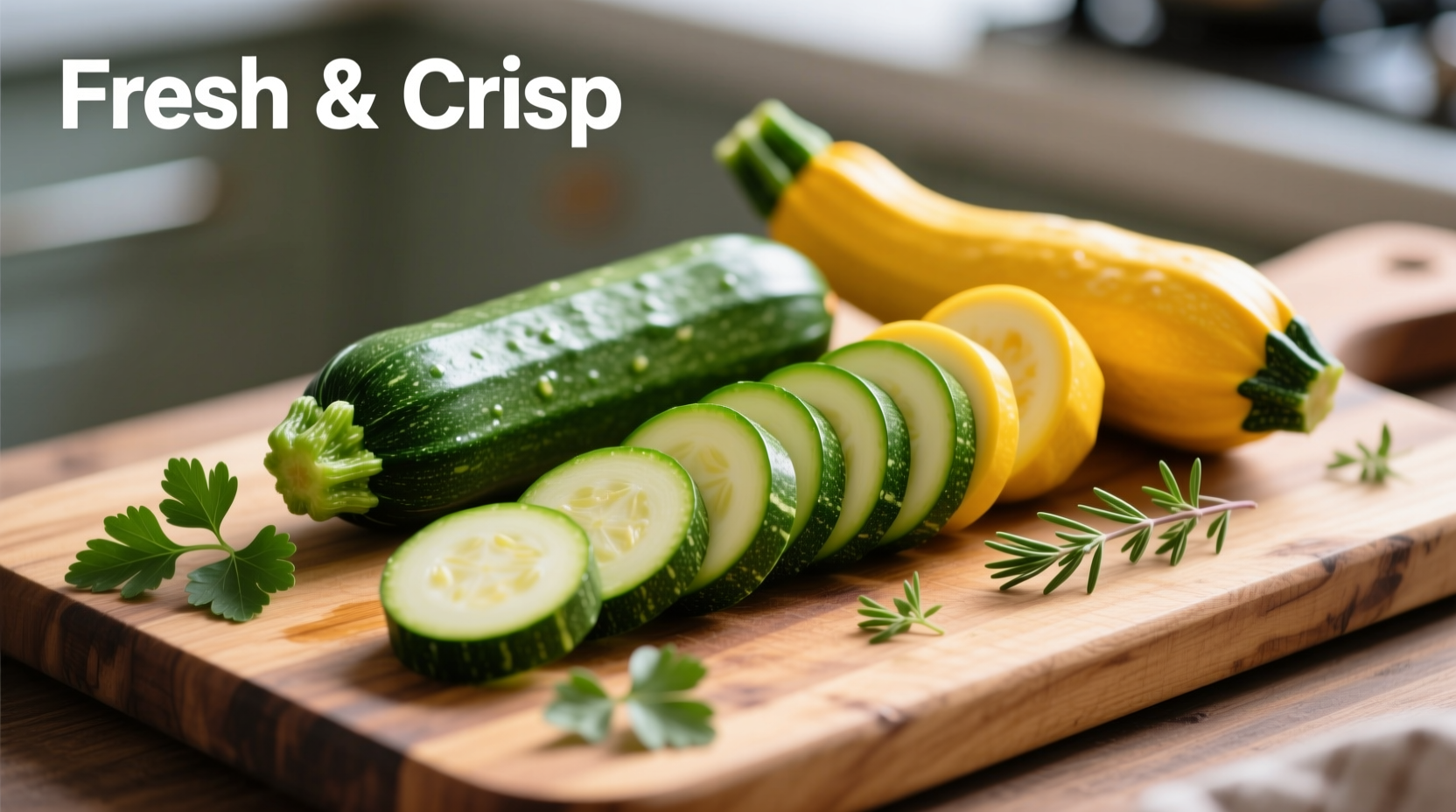Unlock the Full Flavor Potential of Summer's Best Produce
Summer squash and zucchini transform from watery disappointments to culinary stars when prepared correctly. As a chef with professional kitchen experience, I've seen home cooks struggle with soggy results and bland flavors. The secret lies in understanding these versatile vegetables' unique properties and applying precise techniques that professional kitchens use daily.
Understanding Zucchini and Squash Varieties
Before cooking, recognize which type you're working with. Summer squash (including zucchini, yellow crookneck, and pattypan) have thin, edible skins and high water content. Winter squash (like butternut, acorn, and spaghetti) feature hard rinds and denser flesh. This guide focuses on summer varieties, which require different handling than their winter counterparts.
| Variety | Best Cooking Methods | Peak Season | Storage Duration |
|---|---|---|---|
| Zucchini | Sautéing, grilling, roasting | June-August | 4-5 days refrigerated |
| Yellow Crookneck | Sautéing, steaming, raw in salads | July-September | 3-4 days refrigerated |
| Pattypan | Grilling, stuffing, roasting | August-September | 5-7 days refrigerated |
This seasonal comparison reflects USDA agricultural data showing summer squash varieties reach optimal flavor and texture during warm months when grown in appropriate climate zones (USDA Economic Research Service).
Essential Preparation Techniques
Proper preparation prevents the most common cooking failure: watery, mushy results. Follow these professional steps:
- Selection: Choose firm specimens under 8 inches long with smooth skin. Larger zucchini contain more seeds and water.
- Cleaning: Rinse under cool water and dry thoroughly. Avoid soaking, which increases water content.
- Slicing: Cut uniformly (¼ to ½ inch thick) for even cooking. Diagonal cuts create more surface area for caramelization.
- Moisture control: Salt sliced zucchini and let sit 10-15 minutes, then pat dry with paper towels. This draws out excess water that causes steaming instead of browning.

Seven Professional Cooking Methods
Each technique produces distinct textures and flavor profiles. Choose based on your desired outcome:
1. High-Heat Sautéing (Best for Weeknight Meals)
Heat 1-2 tablespoons olive oil in a heavy skillet over medium-high until shimmering. Add zucchini in a single layer (crowding causes steaming). Cook 3-4 minutes per side until golden brown with crisp edges. Finish with lemon zest and fresh herbs. The American Culinary Federation recommends this method for preserving nutrients while developing complex flavors through the Maillard reaction (American Culinary Federation).
2. Roasting (Ideal for Deep Flavor Development)
Toss cubed squash with olive oil, salt, and pepper. Spread on a parchment-lined baking sheet in a single layer. Roast at 425°F (220°C) for 20-25 minutes, flipping once, until caramelized and tender-crisp. For enhanced flavor, add minced garlic during the last 5 minutes of cooking.
3. Grilling (Perfect for Summer Entertaining)
Brush slices with olive oil and season. Grill over medium-high heat 3-4 minutes per side until distinct grill marks appear. For stuffed squash, halve lengthwise, scoop seeds, fill with herb breadcrumb mixture, and grill covered for 15-20 minutes.
4. Steaming (Best for Retaining Nutrients)
Place in a steamer basket over 1 inch of simmering water. Cover and steam 5-7 minutes until tender-crisp. Immediately transfer to an ice bath to stop cooking and preserve vibrant color. This method retains 90% of vitamin C compared to 65% in boiling (FDA Food Labeling Guide).
5. Air Frying (Modern Crisp Texture)
Toss with minimal oil (1 tsp per pound) and seasonings. Air fry at 390°F (200°C) for 8-10 minutes, shaking basket halfway. Results mimic deep-frying with 80% less oil while achieving exceptional crispness.
6. Baking (For Casseroles and Bakes)
Layer with complementary ingredients like tomatoes, onions, and cheese. Bake covered for 20 minutes, then uncovered for 10-15 minutes until bubbly. The layered cooking method allows flavors to meld while maintaining distinct vegetable textures.
7. Raw Preparation (For Salads and Appetizers)
Use a mandoline to create thin ribbons. Toss with lemon juice, olive oil, and fresh herbs. For zucchini carpaccio, slice paper-thin, arrange on platter, and top with shaved Parmesan and cracked pepper.
Flavor Pairing Guide
Understanding which flavors complement squash elevates your dishes from ordinary to exceptional. Consider these pairings based on cooking method:
- Herbs: Basil, oregano, and mint work best with sautéed or grilled preparations
- Cheeses: Feta or goat cheese complements roasted squash; Parmesan enhances raw preparations
- Acids: Lemon juice brightens steamed dishes; balsamic reduction enhances roasted versions
- Proteins: Pair with grilled chicken, shrimp, or white beans for complete meals
Professional kitchens follow the principle that delicate cooking methods (steaming, raw) pair with lighter flavors, while robust techniques (roasting, grilling) stand up to stronger seasonings. This context boundary ensures balanced flavor profiles rather than overwhelming the vegetable's natural sweetness.
Avoiding Common Cooking Mistakes
Even experienced home cooks make these critical errors:
- Overcrowding the pan: Causes steaming instead of browning. Cook in batches if necessary.
- Underseasoning: Squash needs generous salt to enhance natural flavors. Season in layers.
- Undercooking: Properly cooked squash should be tender but still hold its shape.
- Ignoring moisture content: Always salt and drain sliced zucchini before cooking.
Recipe Inspiration for Every Occasion
Transform your techniques into complete dishes:
- Weeknight Sauté: Zucchini ribbons with cherry tomatoes, garlic, and fresh basil
- Entertaining Special: Stuffed yellow squash boats with herbed quinoa and feta
- Meal Prep Friendly: Roasted squash and red onion salad with lemon-tahini dressing
- Kid-Friendly: Zucchini and cheese fritters with Greek yogurt dipping sauce
Storage and Preservation Tips
Extend your squash enjoyment:
- Store unwashed in perforated plastic bag in refrigerator crisper drawer
- Blanch and freeze for winter use in soups and stews
- Pickled squash makes excellent condiment for sandwiches and charcuterie boards
- Grated zucchini freezes well for quick breads and muffins











 浙公网安备
33010002000092号
浙公网安备
33010002000092号 浙B2-20120091-4
浙B2-20120091-4